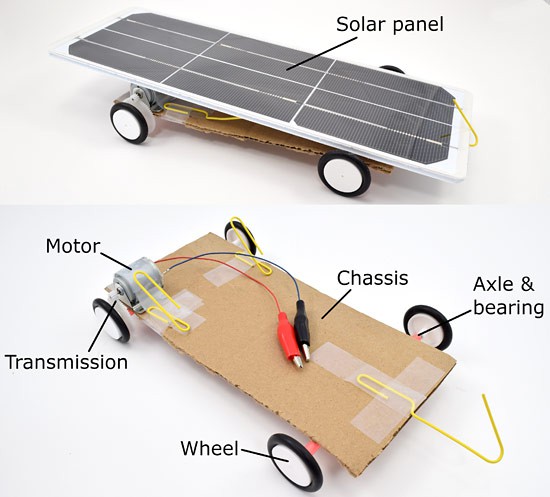
Introduction
Teaching kids about solar energy is not only a timely subject but also an important one. As we face the challenges of climate change and the need for sustainable energy sources, it is crucial to educate our youth about the power of the sun and its potential to create a cleaner and brighter future. By engaging children in solar energy experiments, we can ignite their curiosity, foster their creativity, and instill a sense of responsibility towards the environment. In this article, we will explore the historical background, key concepts, hands-on experiments, case studies, current trends, challenges, and future outlook of solar energy education for kids.
Historical Background
Solar energy has been harnessed by humans for thousands of years. From ancient civilizations using the sun’s warmth to dry crops to the development of solar-powered technology in the 21st century, solar energy has played a significant role in our progress. Notable milestones include the invention of the solar panel in the mid-20th century and the advancements in photovoltaic technology that have made solar energy more accessible and efficient.
Key Concepts and Definitions
To understand solar energy, it is essential to define its sources and comprehend the basic principles of solar energy conversion. Solar energy is derived from the radiant light and heat emitted by the sun. This energy can be converted into electricity using photovoltaic cells, commonly found in solar panels. Other terms associated with solar energy include solar power, which refers to the electricity generated by solar panels, and solar thermal, which involves utilizing the sun’s heat for various applications.
Main Discussion Points
Solar Energy Basics for Kids
One of the first things kids should learn about solar energy is how the sun produces energy. Through the process of nuclear fusion, the sun’s core releases huge amounts of energy in the form of light and heat. This energy travels through space and reaches the Earth, where it can be harnessed for various purposes. Solar energy can be used to generate electricity, heat water, power vehicles, and provide lighting for homes and public spaces. Introducing kids to these different uses of solar energy will broaden their understanding of its potential.
Hands-on Solar Energy Experiments for Kids
Engaging children in hands-on experiments is an excellent way to teach them about solar energy. Simple experiments, such as using a magnifying glass to focus sunlight and create heat, can be a starting point. Building a solar oven is another exciting activity that demonstrates how the sun’s energy can be used for cooking. By following step-by-step instructions, kids can construct their own solar oven using basic materials like a cardboard box and aluminum foil. Additionally, constructing a solar-powered toy or device can provide a fun and interactive way for kids to learn about solar energy and its applications.
Understanding Solar Energy Efficiency
Solar energy efficiency is an important concept to grasp. It refers to the amount of sunlight that is converted into usable energy by solar panels. Factors such as the quality of materials used, the angle and orientation of the panels, and environmental conditions can affect efficiency. By conducting experiments to measure and compare the efficiency of different solar panels, kids can gain a deeper understanding of how these factors impact the overall performance of solar energy systems.
Case Studies or Examples
Real-world examples of solar energy projects for kids can inspire and motivate young learners. Highlighting successful experiments conducted by children or schools can demonstrate the practical applications of solar energy. Stories of how solar energy experiments have impacted communities can also showcase the positive effects of embracing renewable energy sources.
Current Trends or Developments
Advancements in solar energy technology for kids are constantly evolving. Innovative approaches to teaching solar energy, such as incorporating coding and robotics, can enhance children’s understanding of the subject. Recent research findings related to solar energy experiments for kids can also provide insights into effective teaching methods and learning outcomes.
Challenges or Controversies
Implementing solar energy experiments for kids may come with challenges. Limited access to resources and funding, as well as the need for specialized knowledge, can hinder widespread adoption of solar energy education programs. Controversies and differing viewpoints surrounding solar energy education may also arise, particularly concerning the economic viability and reliability of solar power. Overcoming these challenges requires collaboration between educators, policymakers, and the renewable energy industry to ensure that solar energy education for children is accessible and impactful.
Future Outlook
Teaching kids about solar energy has far-reaching implications. By instilling a sense of environmental responsibility and fostering a passion for renewable energy, we are shaping future innovators and leaders in the fight against climate change. Solar energy, with its potential to reduce carbon emissions and provide sustainable power, will play a significant role in addressing the urgent need for clean energy sources. As technology continues to advance and the demand for renewable energy grows, opportunities for solar energy education for kids will expand, creating a brighter future for all.
Conclusion
Solar energy experiments for kids are a powerful tool for educating and inspiring the next generation. By introducing children to the wonders of solar energy, we can empower them to make a positive impact on the environment and become advocates for renewable energy. Through historical context, engaging hands-on experiments, real-world examples, and an exploration of current trends and challenges, this article has provided a comprehensive overview of solar energy education for kids. It is our hope that readers have gained valuable insights and are motivated to engage children in solar energy experiments and education.
References:
“Solar Energy Experiments for Kids” by Emily Hawbaker
“Solar Energy for Kids: Teaching Children about Solar Power” by Marnie Montgomery
“Renewable Energy Projects for Kids: Solar Power” by Peggy Kundar
“Solar Energy: Science Tracer Bullet” by Michael F. Gorman